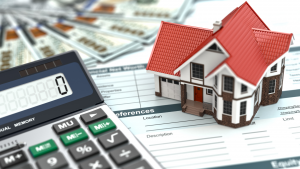Muir Homes
Our Developements:
- Ailsa >
- Ailsa >
- Balmoral >
- Balvennie >
- Benbecula >
- Blairs, Majestic Deeside >
- Cheviot >
- Cheviot >
- Dornoch >
- Elder >
- Errol >
- Gigha >
- Hazel >
- Iona >
- Kinkell >
- Kinkell >
- Kinkell >
- Launching in Autumn 2025 >
- Lewis >
- Lewis >
- Lismore >
- Muir Homes >
- Mulberry >
- Mull >
- Queens Gait >
- Strathearn >
- Swordfish Drive, Dalgety Bay >
- The Deer Pines, Stanley >
- The Grange >
- The Oak >
- The West Path >
- Wemyss >
- Wemyss >
- Wemyss >
- Westray >
Request A Callback
Just fill in your details below and a member of our team will give you a call.
How to calculate your mortgage

Mortgages are some of the biggest commitments you’ll make in your financial life. So, before deciding to purchase a house, it is essential to have a clear understanding of the anticipated payments. When you take out a mortgage, you’ll pay a fixed amount every month, but how much would that be?
How can I calculate my mortgage payments?
If you’re wondering how to calculate your mortgage, then the easiest way to do it is by using our mortgage calculator. Our mortgage calculator is a tool that helps you estimate your monthly mortgage payments based on key financial inputs. Let’s break down each element:
Property Value (£): This is the total value of the property you are looking to buy. Enter the most accurate estimate to get a realistic view of your mortgage.
Deposit Amount (£): The initial upfront payment you make towards the property. A larger deposit often results in lower monthly payments and better interest rates.
Mortgage Term (Years): The number of years over which you’ll repay the loan. Shorter terms usually mean higher monthly payments but lower overall interest paid.
Equity loan as % of property value (%): The difference between a home’s current market value and the homeowner’s mortgage balance due.
Interest Rate (%): The annual interest rate on your mortgage. This can vary based on market conditions and your creditworthiness.
What’s the formula for calculating mortgage payments?
If you don’t want to use the calculator, there are two difficulties when calculating mortgage payments. First of all, interest rates change over time and secondly, the mortgage payment formula is not easy for those not maths-inclined. If you want to calculate your mortgage, you’ll need this formula and numbers to get started:
Payment = P*((r(1+r)^n)/((1+r)^n-1))
r = Annual interest rate (APRC)/12 (months)
P = Principal (starting balance) of the loan
n = Number of payments in total: if you make one mortgage payment every month for 30 years, that’s 30*12 = 360
Here is an example of an average mortgage payment:
r = 0.035/12 = 0.00291 (This is 3.5% interest: you need to divide by 100 to make it a usable number for this formula.)
P = £350,000
N = 30*12 = 360 (One payment a month for 30 years)
If you can’t tell from the points above, this is a £350,000 mortgage at 3.5% APRC and a 30-year term.
| Payment = P*((r(1+r)^n)/((1+r)^n-1)) Payment = 350,000*((0.00291(1+0.00291)^360)/((1+0.00291)^360-1)) Payment = 1,570£ |
What are valuable rates?
Typically, mortgages have a fixed rate for a short period 2-5 years. As soon as your mortgage leaves this introductory rate, you’ll be paying a variable rate, and your monthly payments may change!
Mortgage interest rates can change, often at the bank’s whim, in a variable rate mortgage. This variable rate is usually determined by the Bank of England’s bank rate plus two or three per cent.
Facts to consider after calculating your mortgage
1. Make sure your credit score is good
When you’re thinking about how to buy property, you should make sure you are sprucing up your credit score to prepare for a mortgage application. A good credit score helps lenders assess your mortgage application as a reliable borrower. If your credit score is not ideal, you can also improve it before applying for a loan to increase your chances of getting a mortgage.
2. Get a “Decision Principle”
To understand how much you can borrow and how much money you will need to dedicate each month for your payment. You can use our mortgage calculator and decide whether you can afford the loan.
You can also get a “Decision in Principle,” which involves a soft credit check and lets you know how much you can borrow. While it won’t impact your file, it will show real estate agents that you are serious about buying a property.
3. Consult a mortgage broker
It’s important to get expert mortgage advice as it’s not just the mortgage rate you need to consider but also the type of mortgage, fixed or variable, and its term. With the help of a mortgage broker, you can get the best mortgage at the lowest rate. If it’s the first time you buy a house, they can help you navigate the mortgage market and explore the best product for you.
4. Make sure you know all the costs
When you buy a house for the first time, you’ll discover it involves additional costs that you need to take into consideration, including legal fees, surveys and removal costs. So make sure you understand the full range of costs before starting the buying process.
5. Look for government schemes
It may be possible for you to receive financial assistance from the government in order to buy property. For 2023, the government launched new schemes, including Mortgage Guarantee, Shared Ownership and First Homes. At Muir Homes, we want to get your dream home, which is why we offer an Assisted Move scheme for all our new home developments.
How to buy a property with Muir Homes

Let the experienced team at Muir Homes bring you a step closer to a brand new home with Assisted Move. Buying a property with us is a straightforward process. We’ll take care of everything from start to finish so you can relax and enjoy your new home. Contact us today, and you could be moving into your dream home sooner than you think. Our team of advisors are always on hand to answer any questions you might have. We look forward to hearing from you.

